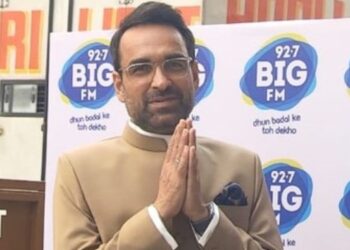‘Communication’ has been one of the most vital means of interaction among humans as it lays the core foundation of our evolution allowing us to stay connected. Although the need for communication has stayed imperial, its modes and channels have been evolving for centuries. From cave paintings and signs, smoke signals, pigeon carriers, sending messages with carriers on horses, to telegram, telephone, and the internet. The evolution of communication channels has been one of the largest and most important ones, staying true to its nature and reinventing itself for survival. With the rise in demand for systematic communication channels, there was a dire need to deliver messages and reach a larger audience swiftly. This led to the birth of radio, known to be one of the oldest and most trusted mediums of communication that built its foundation on credibility and trust. Ever since, radio has been one of the primary mediums of content consumption and dissemination for the two sets of audience i.e. advertisers and listeners.
Accessibility of radio and its revolution
With the internet taking over the world, radio has remained a relevant and credible mode of communication and entertainment. Despite the hiccups caused by the pandemic and the rise of technology taking over the broadcasting industry, radio stood its ground and evolved by integrating different digital platforms for audience expansion. This synergy led to greater outreach and better relationship between the radio networks and their audience. Within India, radio has made itself prevalent in the most remote areas and is running across the length and breadth of the nation. Recognised as the heart of each region, radio has been strengthening its reach by offering hyperlocal content that resonates with the audience.
Nelson Mandela once said, “If you talk to a man in a language he understands, that goes to his head. If you talk to him in his language, that goes to his heart.” Understanding the importance of this, radio channels have not only been focused on curating locally-focused content but have been doing so in the local languages to deepen connections.
The radio industry has always focused on creating innovative and relatable content that would touch the hearts of its listeners. While today’s world has been digitally inclined towards tweeting and messaging, the radio industry has undergone a massive transformation with the aim of captivating consumers and stimulating their theatre-of-mind experience by developing innovative and fresh content that includes podcasts, campaigns, radio shows, RJ integrations, on-ground activations and much more.
Devising Ra-digitalisation to strengthen reach
Ever since the pandemic, the radio industry has been focusing on integrating digital innovations while maintaining the core essence of the business using radio. They have been experimenting and collaborating with other platforms to expand the offerings of their existing IPs. The radio industry has been undergoing a digital change and this ‘Radigitalisation’ strategy has become one of the most important approaches that has allowed radio to continue engaging with the audience and build a stronger business structure. The radio industry is collaborating with various broadcasters to develop state-of-the-art digital offerings and expand their horizon by scouting new opportunities and avenues of income. This can aid the radio players in capturing the attention of the listeners and build a more authentic relationship between RJs and audience.
Keeping up with trends
Today’s audience has become more hybrid in their content consumption choices owing to a plethora of options available at their disposal. The rise of new technologies, such as streaming services and podcasts, has made it easier for consumers to access a wider variety of music and content at their fingertips. It is, therefore, an opportunity for FM players to collaborate with such streaming platforms and disseminate podcasts and shows. One such instance of this is that Radio City has tied up with Spotify to provide content, including more than 1,400 episodes of 16 audio IPs, exclusively to Spotify users.
As we are in the age of digital and technological revolution, ‘Radigitalisation’ will continue to be a major focus for radio to pave the way for the next phase of growth and thrive as a robust medium. It is vital that FM radio brands continue reinventing and restructuring their business and chalk out a digital strategy to find novel ways to differentiate themselves and offer unique value-added propositions to the audience which includes advertisers and listeners. As RJs are avid social media influencers, they are also being strategically utilised by advertisers as a powerful marketing tool to deliver brand messages.
Enticing new age listeners
One of the most important reasons why FM radio brands continue reinventing themselves is the broadening demographic of their audience. Younger generation including GenZ are more likely to consume audio content through streaming services and podcasts, while older generations still prefer traditional radio. To reach and engage with a wider audience, radio brands have adapted their programming and content to appeal to different age groups. In order to cater to a broader population, including the social media-savvy millennials and GenZ listeners, radio stations and marketers are turning to digitally-driven solutions by introducing podcasts, campaigns, quirky interviews led by RJs, introducing digital radio IPs, partnering with live concerts and engaging in many other activities. With RJs becoming increasingly popular as social media influencers, radio brands get an opportunity to reach their younger audience in a much more impactful manner and build a stronger recall value.
It is imperative for radio brands to continue creating new business structures that will captivate the changing younger demographic to continue making an impact and staying relevant and a preferred mode of content consumption in the future.
The radio industry has embarked on a digital transformation journey to further refine convergence between digital and audio by leveraging radio and digital platforms for broader amplification. This phenomenon has witnessed wide acceptance from listeners as well as advertisers who are now emphasising branded content features on digital radio and incorporating digital audio into their media plans. As radio continues to reinvent itself, it has to keep up with the current trends and demographics. It will continue to remain one of the most influential mediums for infotainment with favourite RJs sharing city news, a morning dose of motivation, or an evening unwinding with favourite songs. We are optimistic that as we move forward, radio will only continue to escalate its reach and contribute positively to the growth of the economy.
(The author is CCO, Radio City.)

















